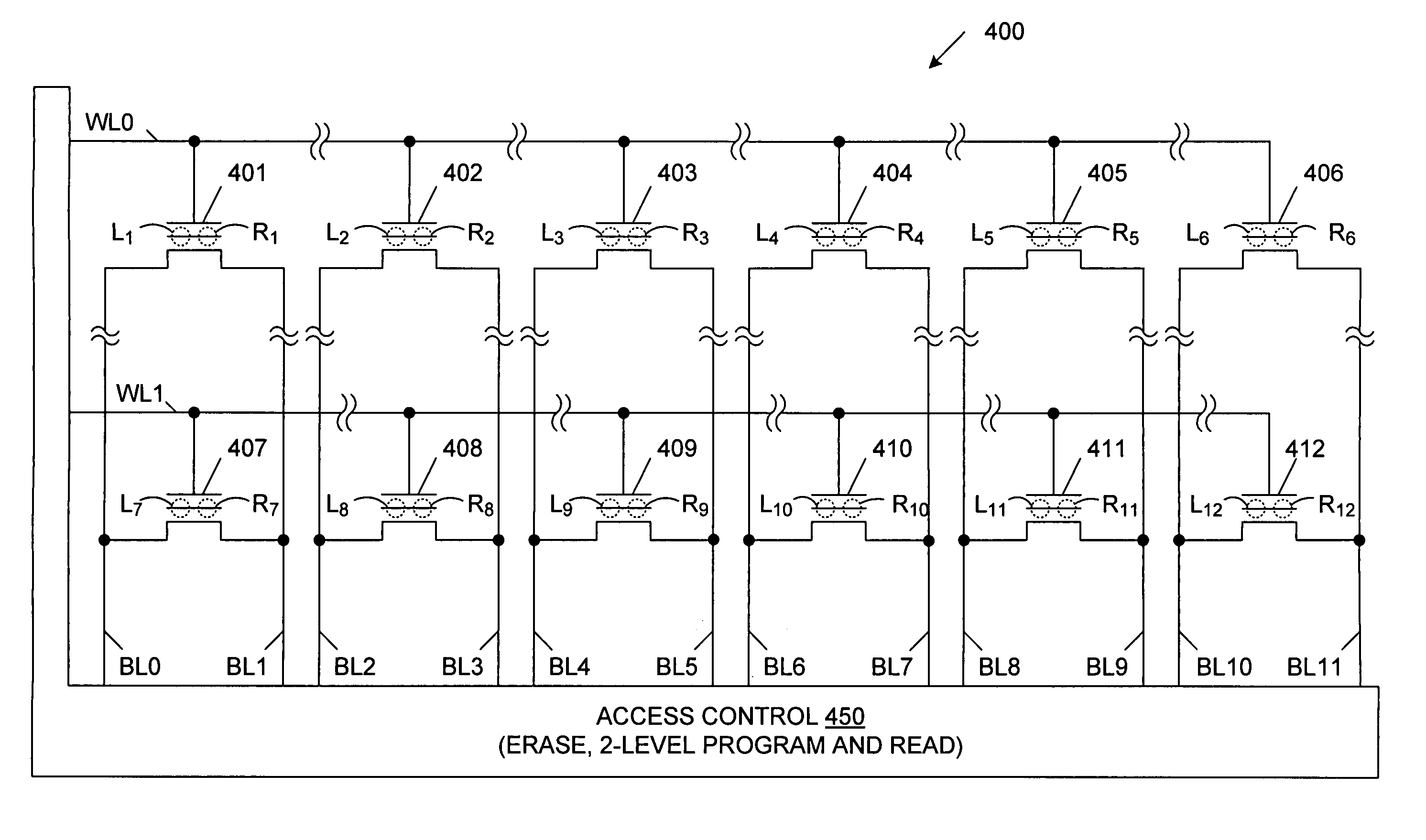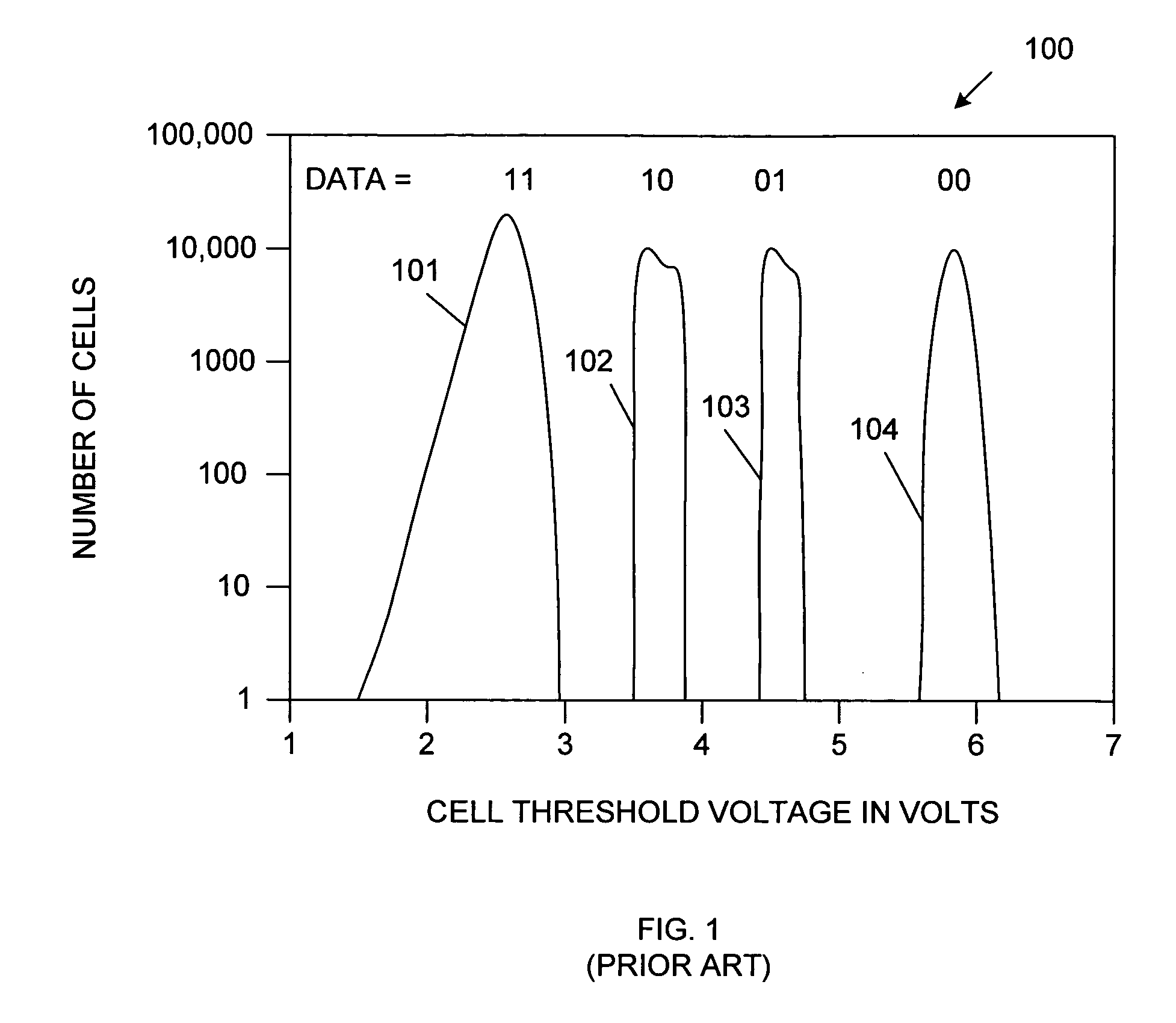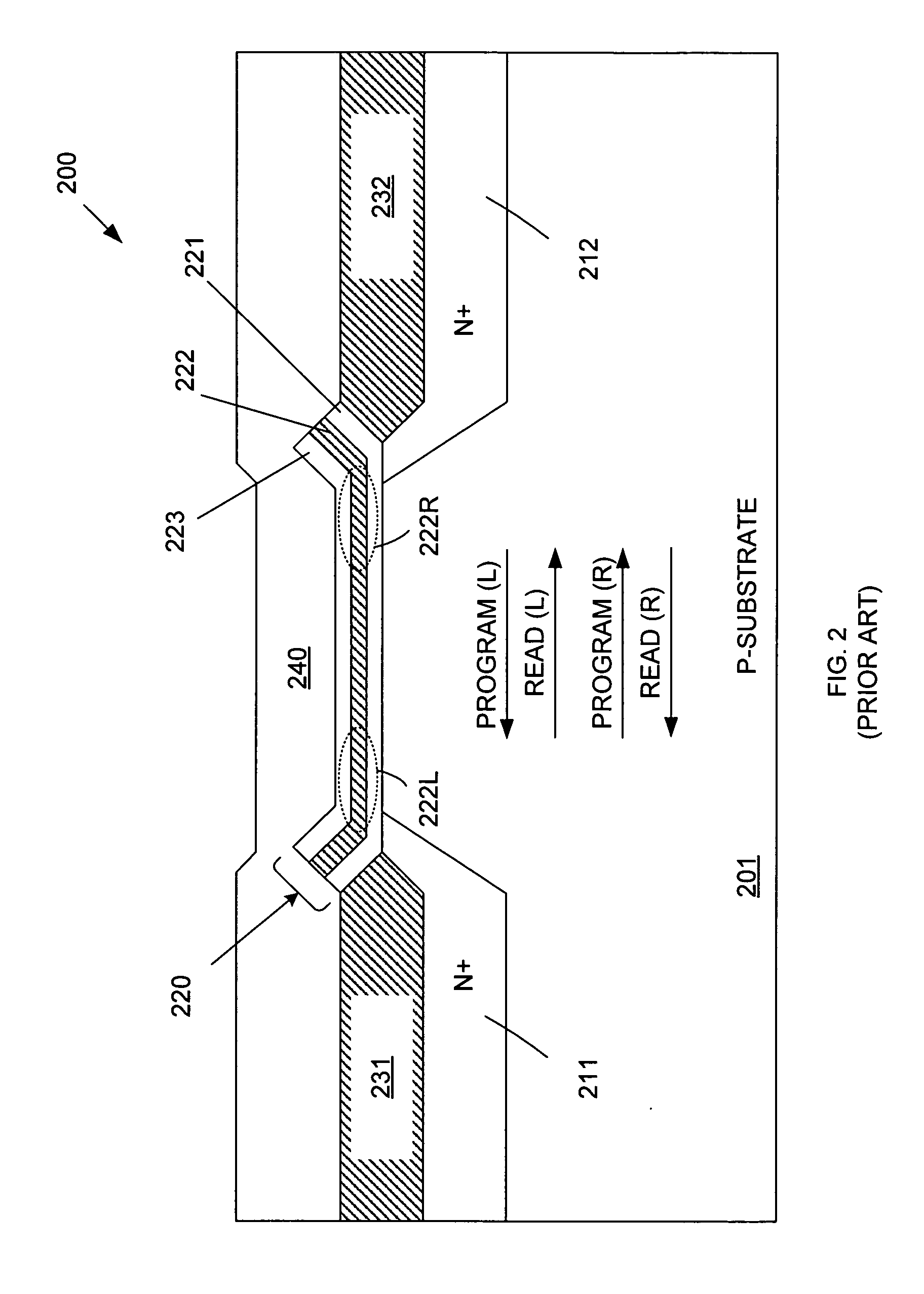3-Bit NROM flash and method of operating same
a technology of nrom flash and nrom cell, which is applied in the direction of read-only memories, static storage, instruments, etc., can solve the problems of complex programming circuitry, read circuitry, and the need to detect four threshold voltage ranges, so as to increase the storage capacity of an nrom array, improve the operation of the nrom cell, and increase the density
- Summary
- Abstract
- Description
- Claims
- Application Information
AI Technical Summary
Benefits of technology
Problems solved by technology
Method used
Image
Examples
Embodiment Construction
[0026]FIG. 4 is a circuit diagram of an NROM array 400 in accordance with one embodiment of the present invention. NROM array 400 includes a plurality of NROM cells 401-412, arranged in rows and columns, and an access control circuit 450. In one embodiment, each of NROM cells 401-412 is similar to NROM cell 200 (FIG. 2). Thus, each of NROM cells 401-412 includes a pair of isolated charge trapping regions (i.e., a right charge trapping region and a left charge trapping region), each located over a corresponding source / drain region of the associated NROM cell. NROM cells 401-412 include left charge trapping regions L1-L12, respectively, and right charge trapping regions R1-R12, respectively. Each charge trapping region is illustrated as a dashed circle in FIG. 1. The control gates of NROM cells 401-406 of the first row are coupled to word line WL0, while the control gates of NROM cells 407-412 of the second row are coupled to word line WL1. Each column of NROM cells is coupled to a co...
PUM
 Login to View More
Login to View More Abstract
Description
Claims
Application Information
 Login to View More
Login to View More - R&D
- Intellectual Property
- Life Sciences
- Materials
- Tech Scout
- Unparalleled Data Quality
- Higher Quality Content
- 60% Fewer Hallucinations
Browse by: Latest US Patents, China's latest patents, Technical Efficacy Thesaurus, Application Domain, Technology Topic, Popular Technical Reports.
© 2025 PatSnap. All rights reserved.Legal|Privacy policy|Modern Slavery Act Transparency Statement|Sitemap|About US| Contact US: help@patsnap.com



